アルミダイカストは、精密で耐久性のある部品を大規模に生産することで有名な一般的な製造プロセスです。溶融アルミニウムを高圧充填された金型に押し込むことにより、寸法精度の高い複雑な形状を作ります。アルミダイカストは、特に強度対重量比の良い部品を製造するのに便利です。したがって、このプロセスは自動車、航空宇宙、電子、産業機械産業に最適です。アルミダイカストは、より小さな部品やより大きな部品の製造を可能にし、通常、製造後の機械加工をあまり必要としません。
アルミダイカストの利点は、費用対効果、部品の均質性、アルミの軽量性で、自動車や機械では燃費と性能の両面で有利です。しかし、他の製造工程と同様、限界があります。高い初期金型投資コスト、対応可能な部品サイズの制限、気孔率のような問題に対処しなければならない可能性によっては、より実現性の高いプロジェクトもあるでしょう。
この記事では アルミダイキャスト は、ビジネスにおける効率的な意思決定プロセスの指針となるような、業界におけるこの金属の使用と課題の全体像を提供するために検討されている。
アルミダイカストとは?
アルミダイカストは、鉄でできた金型(ダイ)に溶かした金属(アルミ)を高圧で注入し、細部まで正確で強度の高い部品を製造する。機械加工や仕上げに時間がかからないため、大規模な機械加工が安価で済みます。ダイカストで製造された金型は、何千回も使用できるため、大規模生産の経済性が向上する。
このアプローチは、機械加工や鍛造などの他の加工技術では容易に作ることができない複雑な形状を、薄い材料で作る場合に特に実用的である。アルミダイカストの一般的な用途としては、自動車のエンジン部品、電子機器の筐体、機器のその他の機械加工構造などがあります。
アルミダイカストの利点
1. 耐久性と高強度
アルミダイカストで作られた部品は頑丈であると考えられており、これは産業界に完璧な標本を持つ要求の厳しい、長持ちする部品を提供します。アルミニウムという金属自体は軽量でありながら強靭であり、このプロセスで鋳造されると、極端な使用条件下でも強靭な部品ができます。このような特質により、アルミダイカストは自動車、航空宇宙、工業分野で大きな可能性を秘めています。
さらに、キャビティ金型の密度と非常に特殊な特徴を持つ部品を製造する可能性は、部品全体の強度を高めます。アルミダイカストで製造されたエンジンブロックやトランスミッションの部品は、エンジンの活動に伴う荷重や熱に対して、早期に壊れることなく耐性を発揮する可能性があります。
2. コスト効率
アルミダイカストによる大量生産は非常に安価である。同じ金型を複数の生産に使用するという本質により、数量が増えれば増えるほど、1個あたりの生産コストの削減が保証されます。この効率は非常に高く、他の鋳造技術に比べ、使用する材料の無駄が最小限に抑えられます。アルミニウムの手頃な価格とその流通性は、ダイカストプロセスの経済性に大きく貢献しています。
また、アルミダイカストは生産後の機械加工を最小限に抑え、手作業によるコストを削減します。アルミダイカストは、低コストで高品質な生産部品を必要とする産業において、計算されたソリューションを提供します。
3. 正確さと真実性
部品の高い精度と一貫性は、アルミダイカストの大きなメリットの一つです。高圧射出成形の結果、どの部品も他の部品と同じであるが、それ以外はほとんど狂いがない。この、いやむしろ高いレベルでの一貫性は、一連の部品が非常に正確に測定され、高いレベルの性能を達成できなければならないエレクトロニクス、自動車産業、航空宇宙の領域で特に重要な意味を持つ。
この技術により、微細なディテール、シャープなエッジ、薄い壁を持つ部品を、すべて厳しい公差で製造することができる。これは、機械加工などの鋳造後の工程にかかる時間とコストを抑える能力である。
4. 軽量特性
アルミニウムは非常に軽量な金属であり、ダイカストで鋳造されることによって、それは変わらず、この特性は、アイテムの重量が本質であるアプリケーションのために修飾されます。自動車産業や航空宇宙産業などの産業で使用される部品は、性能や燃費を向上させるためにかなりの重量があります。アルミダイカストによって製造される部品が軽量であることは、自動車や航空機の全体的な重量の軽減を容易にし、それによって燃費と性能を向上させます。
例えば、自動車のエンジンブロックなどの軽量化にはアルミダイカストが利用され、燃費向上や燃費制御の実現に役立っている。
5. 耐食性
アルミニウムはその生来の性質により、酸化物として知られる保護層を自然に表面に形成するため、腐食に対して強い耐性を持っています。これは特に、部品が湿気や化学薬品、高温にさらされるような場合に役立ちます。したがって、アルミダイカストは、海洋や屋外の電気システムを含む、多様な屋外や過酷な条件下で永続的な性能を発揮します。
この鋳造技術のもうひとつの大きな利点は、アルミニウムの耐食性によって部品の寿命が延び、頻繁な修理や交換が不要になることである。
6. 汎用性
アルミダイカストは、鋳造する部品の種類、形状、形態、複雑さに関して10倍の柔軟性を持っています。このプロセスで製造できるものには、ギアやコネクターなどの小さくて複雑な部品から、ハウジングや構造部品などの大きな部品まであります。柔軟性が高いため、自動車、航空宇宙、その他の電子機器、産業機械など、幅広い分野での応用が期待されている。
さまざまな形状や特徴を持つアルミニウム部品を鋳造できることで、設計者は、強度、重量、機能性だけでなく、個々の用途のニーズに特に適した部品を作ることができます。
アルミダイカストの欠点
1. 高価な最初の金型費用
アルミダイカスト鋳造の高い金型費用は、この鋳造方法の主な欠点の1つです。鋳造プロセスでは、金型やダイスを使用しますが、これは通常、鋼鉄を使用して作成するため、非常に高価になることがあります。この最初の出費は、小規模生産の場合、コスト高になる可能性がある。それでも、生産量が増えるにつれて、生産単価は低くなり、ダイカストが大量生産で最も経済的である理由がわかります。
さらに、金型の設計やメンテナンスの工程は高度になる可能性があり、金型の寿命と性能を延ばすためには熟練した労働力が必要となる。
2. 小型部品への制限
アルミダイカスト鋳造プロセスは、部品に高い精度を提供することができますが、全体的に部品が小さい方が良い生産プロセスです。金型と鋳造プロセスによって、効率的に生産できる部品の最大サイズが制限されます。部品が大きくなればなるほど、金型は複雑になり、大きな圧力がかかるため、コストも時間もかかります。
砂型鋳造や鍛造のような他の製造工程は、構造体の大きな部分が必要な用途の場合、より賢明である。
3. デザインの複雑さ
アルミダイカスト鋳造の用途は広いが、考慮しなければならない設計上の制約もある。微細な壁や細部は困難であることが判明する可能性があり、特定の複雑な形状の鋳造が問題となる可能性があります。部品の設計は、溶けたアルミニウムが金型に自由に入ることを可能にするものでなければならず、そのため、部品に複雑すぎる形状やアンダーカットがあると、部品が簡単に製造できないことがあります。
さらに、鋳造のプロセスそのものが、壁の厚みや鋭利なエッジなど、設計のさらなる変更を必要とするような制約をもたらすかもしれない。
4. 気孔率の問題
また、アルミダイカスト鋳物には気孔がある場合があります。これは、鋳物内に小さな気泡や空洞がある状態です。これは、部品の剛性を損なったり、製造中や完成品の性能の不具合につながる欠陥です。気泡は通常、鋳造工程が正しく処理されなかったり、材料が汚染されたりした場合に発生します。
これは適切な品質管理措置によって克服されるかもしれないが、特にストレスの高い部品においては危険の可能性がある。
5. 環境への影響
アルミダイカストの環境への影響を無視してはならない。アルミニウムを温めるために必要なエネルギーや、鋳造に使用する圧力は膨大なものになる可能性があり、製造スキームによって廃棄物や汚染物質が発生する可能性があります。また、アルミダイカストのリサイクルや廃棄は、材料を他の部品から分離する必要があるため、困難な場合があります。
しかし、アルミニウムはリサイクル可能な素材であり、この業界もダイカストによる環境への影響を少なくするために、より持続可能な方法を次々と打ち出している。
アルミダイカストの種類
アルミダイカストには数多くの種類があり、鋳造工程で使用する特定の手順に基づいて大別することができる。これらの手順は、設備、生産量、部品の複雑さによって異なります。主なアルミダイカストの種類を以下に示します:
1.高圧ダイカスト(HPDC)
鋳造に最も広く採用されている金属はアルミニウムであり、最も多くの技術を採用しているのは高圧鋳造である。高圧鋳造は、溶けたアルミニウムを非常に高い圧力(約1,000~4,000psi)で鋼鉄製の鋳型に押し込んで行います。この強い圧力により、金型のすべての空洞が溶けたアルミニウムで満たされ、気孔率の低い優れた精度の部品ができます。この方法は、自動車エンジンブロック、トランスミッションハウジング、電子機器カバーなどの小・中型部品の大量生産に最適です。
主な特徴
- 精度と部品間の品質が高い、連続的、部品間の精度が高い
- 大規模な製造業に適している
- 複雑な形状の部品に適用可能
2.LPDC ( 低圧ダイカスト )
低圧ダイカストでは、溶融アルミニウムを金型に押し込む圧力が低くなります(通常は約2~15psi)。アルミニウムは、金型下のリザーバーから注入されるのが一般的で、こうすることで、金型キャビティをよりゆっくり、より制御された方法で満たすことができます。この方法は、大型部品の製造に一般的に採用されており、高い機械的強度と低い気孔率が非常に重要な場合には、この製造方法が好まれます。
主な特徴
- 大型で肉厚の部品に最適
- 狭い気孔率と優れた部品強度
3.重力ダイカスト(GDC)
重力ダイカスト(永久鋳型鋳造とも呼ばれる)とは、外部からの圧力を一切使用せず、重力を利用して溶融アルミニウムを鋳物の「金型キャビティ」に導入するプロセスである。このプロセスでは、重力を利用して金型を充填するため、通常、高圧ダイカスト鋳造よりもゆっくりと充填されます。重力ダイカストは通常、機械部品、機械ハウジング、エンジン部品など、適正な表面仕上げと機械的特性を必要とする中型から大型部品の鋳造に使用されます。
主な特徴
- 大型部品に十分な大きさ
- 高圧ダイカスト鋳造に比べ、金型費用が安い。
- 中程度の複雑さの部品によく適用される。
4.スクイーズ・キャスティング
スクイズ鋳造は、ダイカストと鍛造を組み合わせたパートハイブリッドである。このプロセスでは、溶けたアルミニウムが金型に注入され、その後、圧力がかかり、材料が金型キャビティのすべてのセクションを満たすように強制されます。これは、高レベルの表面仕上げと高い機械的強度の両方を必要とする部品を作る場合には完璧なプロセスです。強度と耐久性が重要な要素である航空宇宙、軍事、自動車産業で通常使用されるスクイズ鋳造では、この材料がうまく組み合わされます。
主な特徴
- 高強度の部品を製造
- 鋳造と鍛造の長所を併せ持つ
- 高性能の複雑な部品に適用可能
5.真空ダイカスト
真空ダイカストは、金型キャビティを真空にする以外は、高圧ダイカストプロセスに似ています。これにより、エアポケットやその他の欠陥が最小限に抑えられ、優れた部品が得られる。一般的には、複雑な内部形状を持つアルミニウム製部品や、タービンブレード、熱交換器、航空宇宙用部品など、寸法を厳しい公差内に維持する必要がある部品の製造に適用される。
主な特徴
- 空気の混入や穴の少ない部品の製造
- 部品に高い強度と厚み精度が要求される場合に最適。
- 高性能クリティカル・アプリケーション 用途
6.コールドチャンバーダイカスト
コールドチャンバーダイカストでは、溶融アルミニウムをショットチャンバーに注入し、高圧プランジャーで金型に押し込む。コールド・チャンバー・ダイカストとホット・チャンバー・ダイカストの最も顕著な違いは、前者では溶融金属が射出機構に直接接触した状態に維持されないことである。この技術は通常、アルミニウム合金のような高融点材料に適用される。コールド・チャンバー・ダイカストは、自動車、航空宇宙、エレクトロニクス産業で広く使用されている。
主な特徴
- アルミニウムのような高融点の合金に適している。
- 通常、強度と耐久性が必要な部品に適用される。
- より多くのエネルギーと設備投資を必要とする
アルミダイカストの未来
軽量・高強度材料の需要増加
より低燃費で環境的に持続可能な解決策を見出さなければならないという産業界の圧力は、アルミニウムを含む軽量かつ高強度材料の需要が増加するという事実を助長している。アルミダイカストは、特に自動車産業、航空宇宙産業、再生可能エネルギー産業において、こうしたニーズをサポートすることができます。アルミダイカストは、強度がありながら軽量な部品の製造を可能にし、ひいては、全体的な効率を高め、環境への負担を最小限に抑える製品づくりに貢献します。
電気自動車(EV)産業における機会
この自動車の電動化(EV)は、アルミダイカストによっておそらく獲得できる機会である。軽金属は自動車の航続距離と性能を向上させるために不可欠であるため、アルミダイカストは重要なEV部品を開発するための理想的なソリューションだからです。アルミニウムは、バッテリー・ハウジング、シャーシ、ボディ・パネルなど、電気自動車の一般的な機能性と持続可能性の向上に関わる重要な部品に、軽量性と強靭性を提供します。
鋳造プロセスにおける技術の活用
技術の進歩は、アルミダイカストの品質と生産性に関連して、さまざまな形でアルミダイカスト工程の将来を高めています。金型材料、金型、自動化技術の向上は、鋳造工程のスピードアップと精度の確保を実現しています。強化されたオートメーションの使用により、人間の手によるエラーも最小限に抑えられ、革新的な金型技術により、より良い熱管理が行われるため、サイクルタイムが短縮され、一貫性が向上しています。
持続可能性とエネルギー効率の高い生産
持続可能性は、アルミダイカストの将来に大きな影響を与え続けている。環境への関心が高まる中、メーカーはダイカスト鋳造工程で発生する炭素の量を減らすため、より環境に優しい生産工程に注目しています。それに加えて、アルミニウムはリサイクル可能であり、これはより持続可能で持続可能な世界にとって魅力的な資産である。リサイクル工程は、アルミダイカストの環境への影響をさらに最小化する助けとなるよう、将来的に改良される予定であり、その結果、環境に優しい製造に採用する選択肢として、さらに大きなものとなるでしょう。
GC精密金型:あなたのアルミダイカスト信頼できるサプライヤー
GC精密金型は、多くの産業に合わせてアルミの高度なダイカスト条件の生産を専門とする会社です。私たちの精密設計されたコンポーネントは、長年の専門知識で、性能と耐久性の最高水準の芸術の状態を誇っています。自動車産業、航空宇宙産業、産業機械産業において、当社のハイテク鋳造プロセスは、軽量、高効率、高強度、高コスト効率の部品を提供します。
これは、私たちがあなたのウイングマンであり、最初の設計と最終的な生産に関しては、私たちはもちろん、効果的かつ効率的な方法であなたが必要とするものを成し遂げるために、あなたの境界内で、可能な限り最高のサービスを提供することを確認するからです。GC精密金型を選べば、あなたのビジネスを継続させる高品質の結果を信頼することができます。
結論
この製造プロセスは、強度、コスト効率、優れた精度、軽量性など数多くの利点を持つ、比較的効果的で二重の製造技術である。耐久性と信頼性の高い部品を製造できるため、自動車や電子機器などさまざまな産業分野に適している。しかし、工程開始時の高価な金型、部品サイズの制限、気孔率の問題の可能性など、課題も存在する。
最終的に、このような使用法を適用するかどうかの判断は アルミダイキャスト は、用途のニーズによって異なります。すべての場面で適用できるわけではありませんが、優れた機械的特性を持つ中小サイズの部品を大量に生産する必要がある場面では、アルミダイカストはこの点で最も優れた近代的製造方法のひとつであると言えます。
よくあるご質問
1.アルミダイカストとは?
アルミダイキャストプロセスでは、溶融アルミニウムを圧力下で金型に注入し、精密で耐久性があり、大量生産に最適な部品を形成します。
2.アルミダイカストの長所は何ですか?
精密で、経済的で、スリムで、強い。この事実が、自動車産業や航空宇宙産業に関わる複雑な部品に理想的であることを可能にしている。
3.どのような制限がありますか?
初期金型は高価で、中小サイズの部品に適している。また、部品の強度に問題をもたらす気孔が発生することもある。

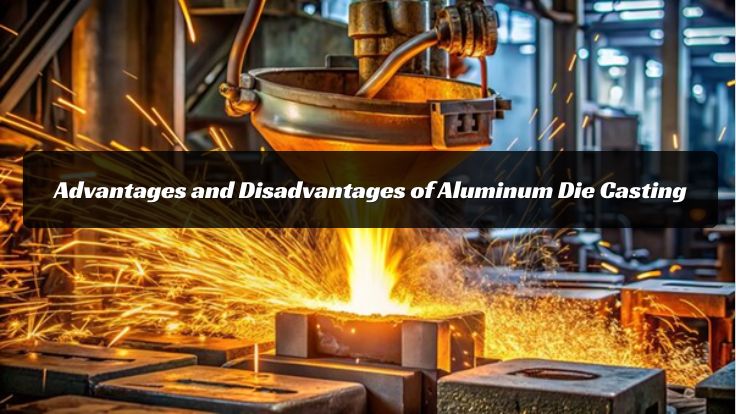
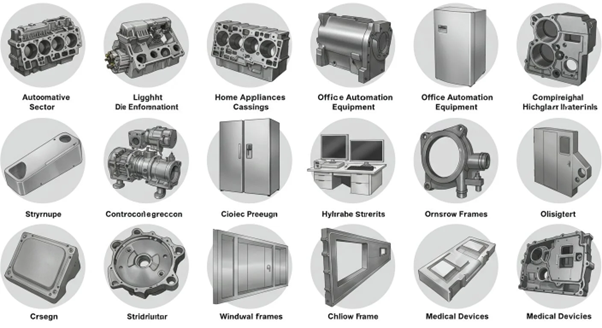
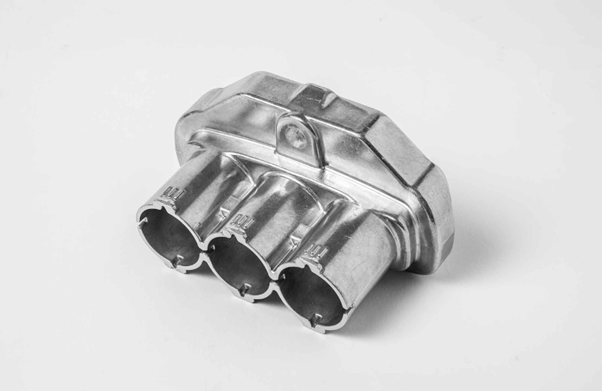
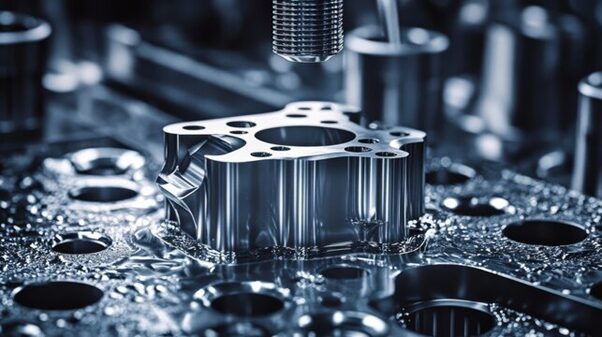
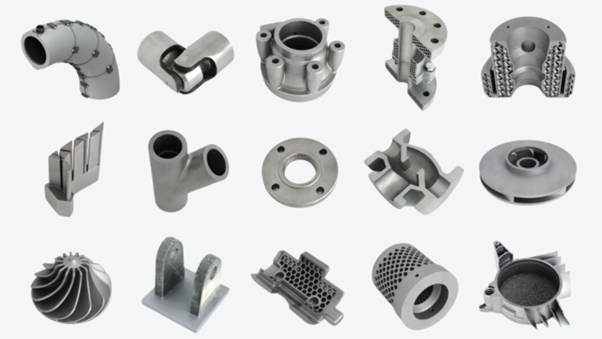
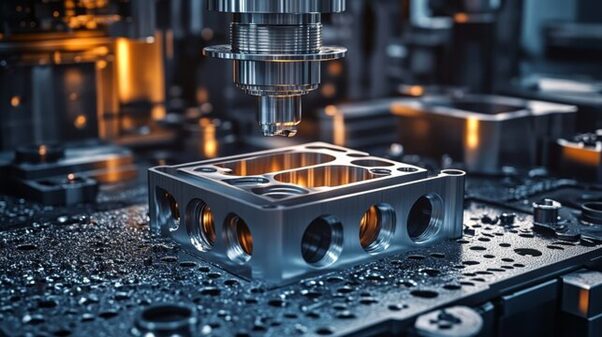

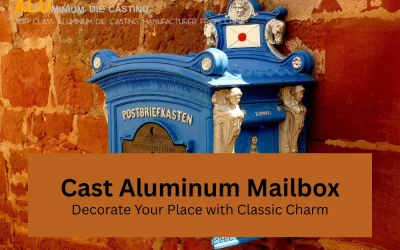
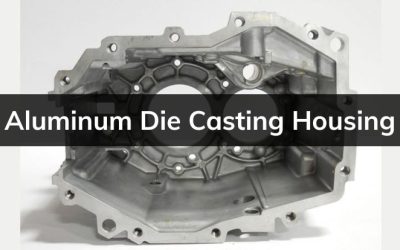
0コメント